
How to Use ACS712 30A: Examples, Pinouts, and Specs
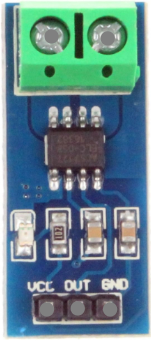
 Design with ACS712 30A in Cirkit Designer
Design with ACS712 30A in Cirkit DesignerIntroduction
The ACS712 30A is a Hall effect-based current sensor designed to measure both AC and DC currents up to ±30A. It provides an analog voltage output that is proportional to the current flowing through the sensor. This compact and reliable sensor is widely used in power monitoring, motor control, battery management systems, and overcurrent protection circuits. Its ability to measure high currents with electrical isolation makes it a popular choice for various industrial and hobbyist applications.
Explore Projects Built with ACS712 30A
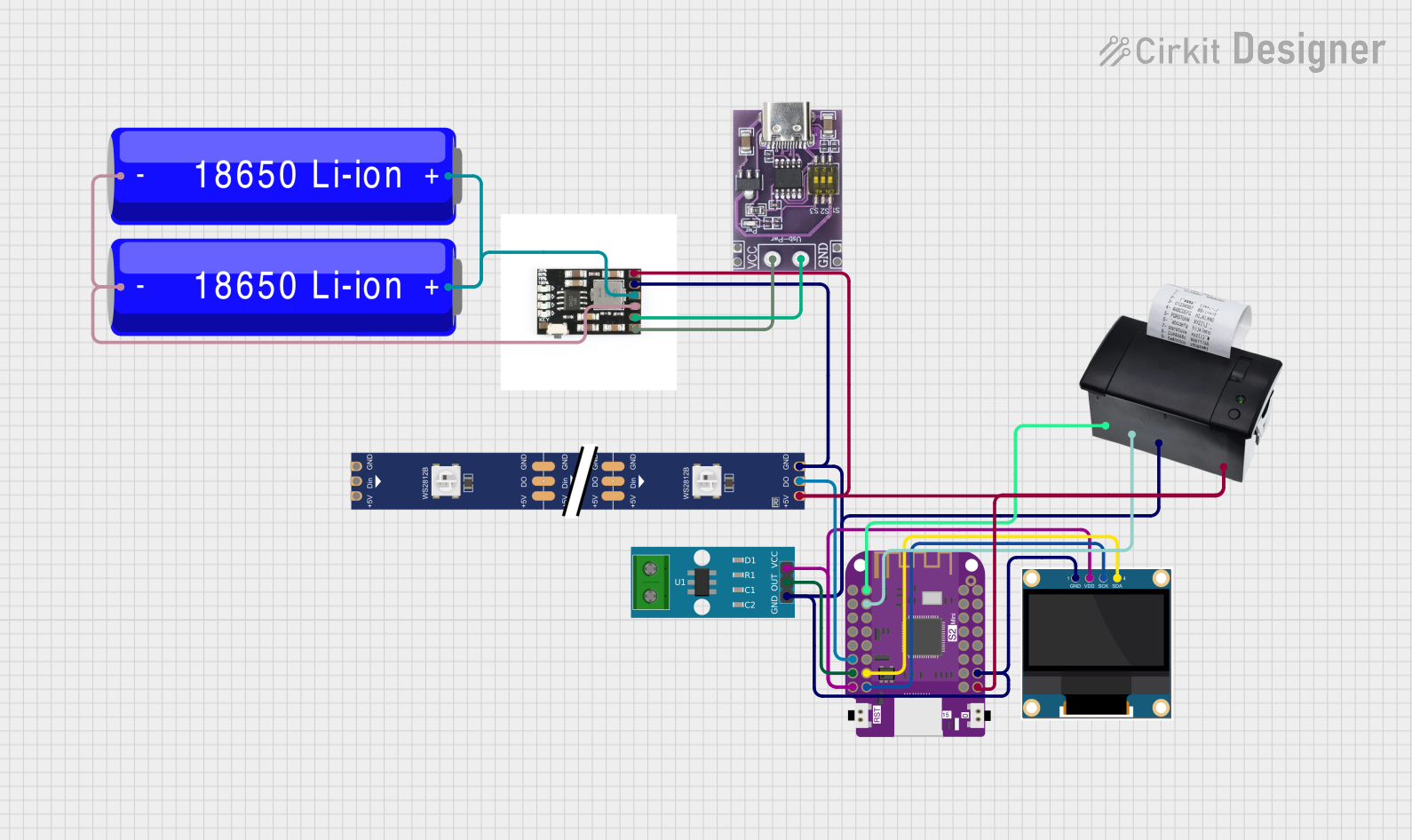
 Open Project in Cirkit Designer
Open Project in Cirkit Designer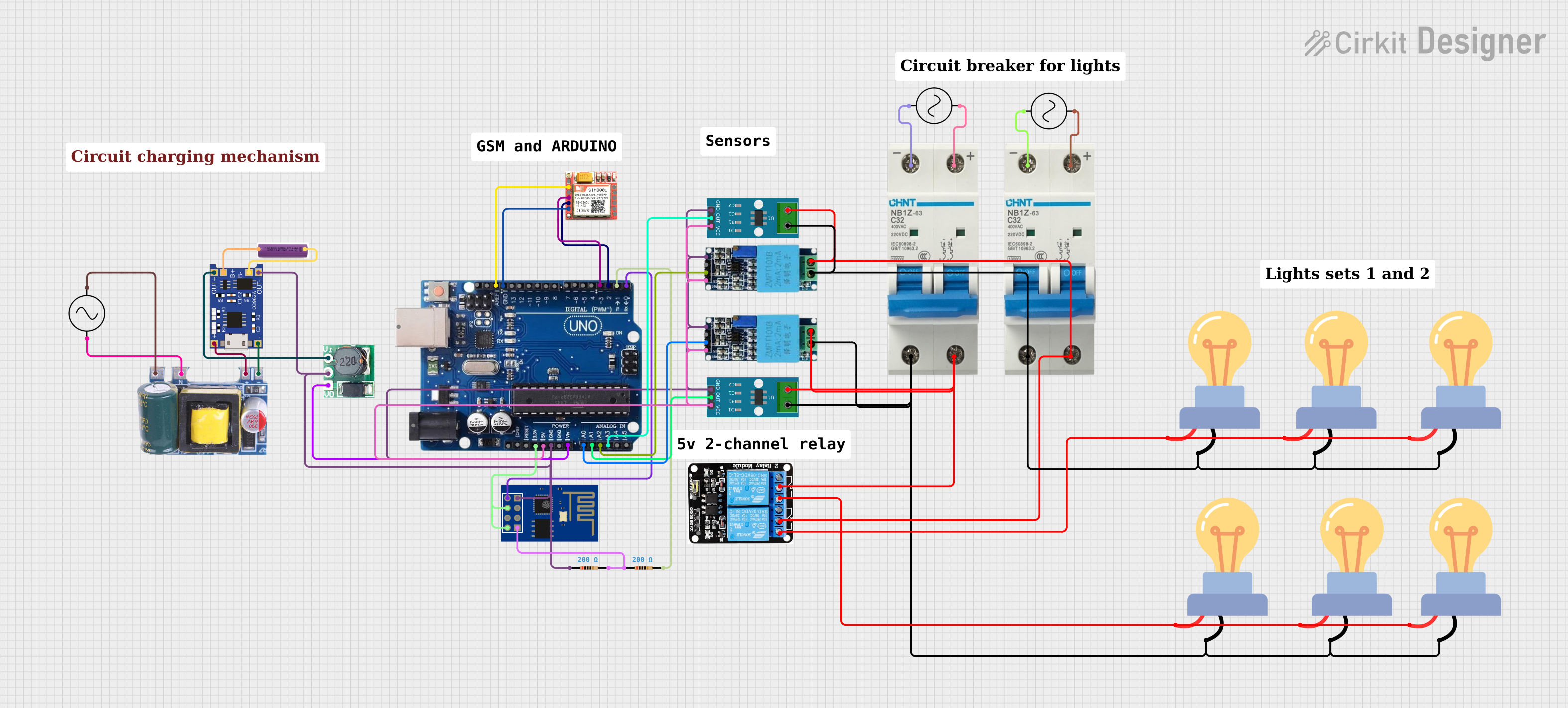
 Open Project in Cirkit Designer
Open Project in Cirkit Designer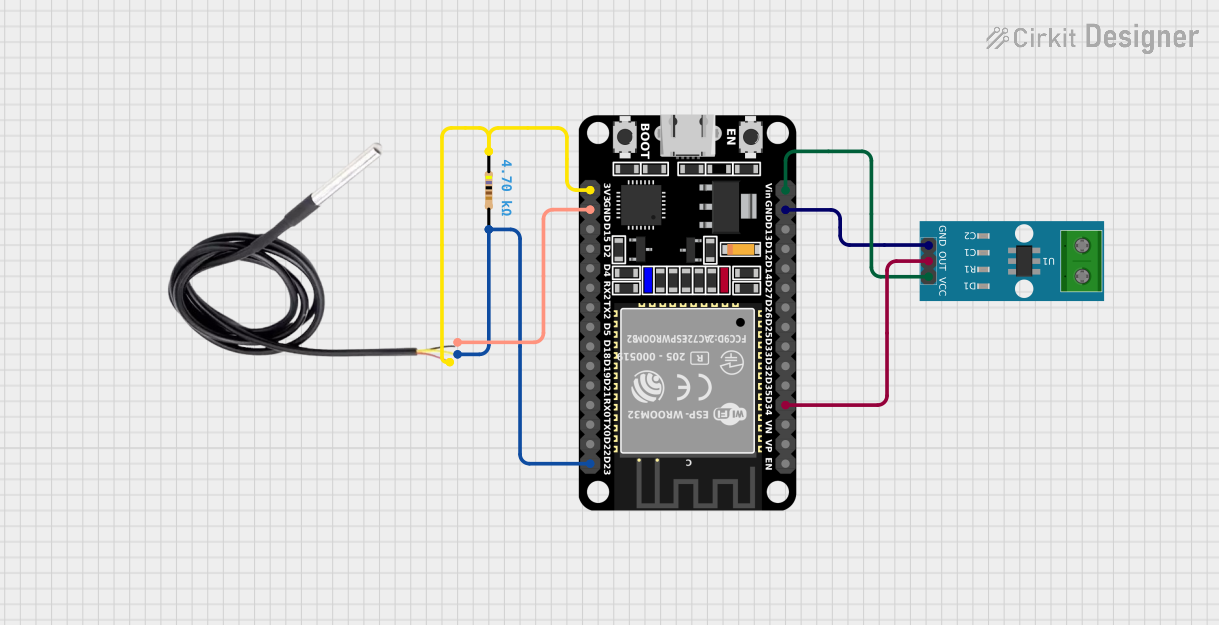
 Open Project in Cirkit Designer
Open Project in Cirkit Designer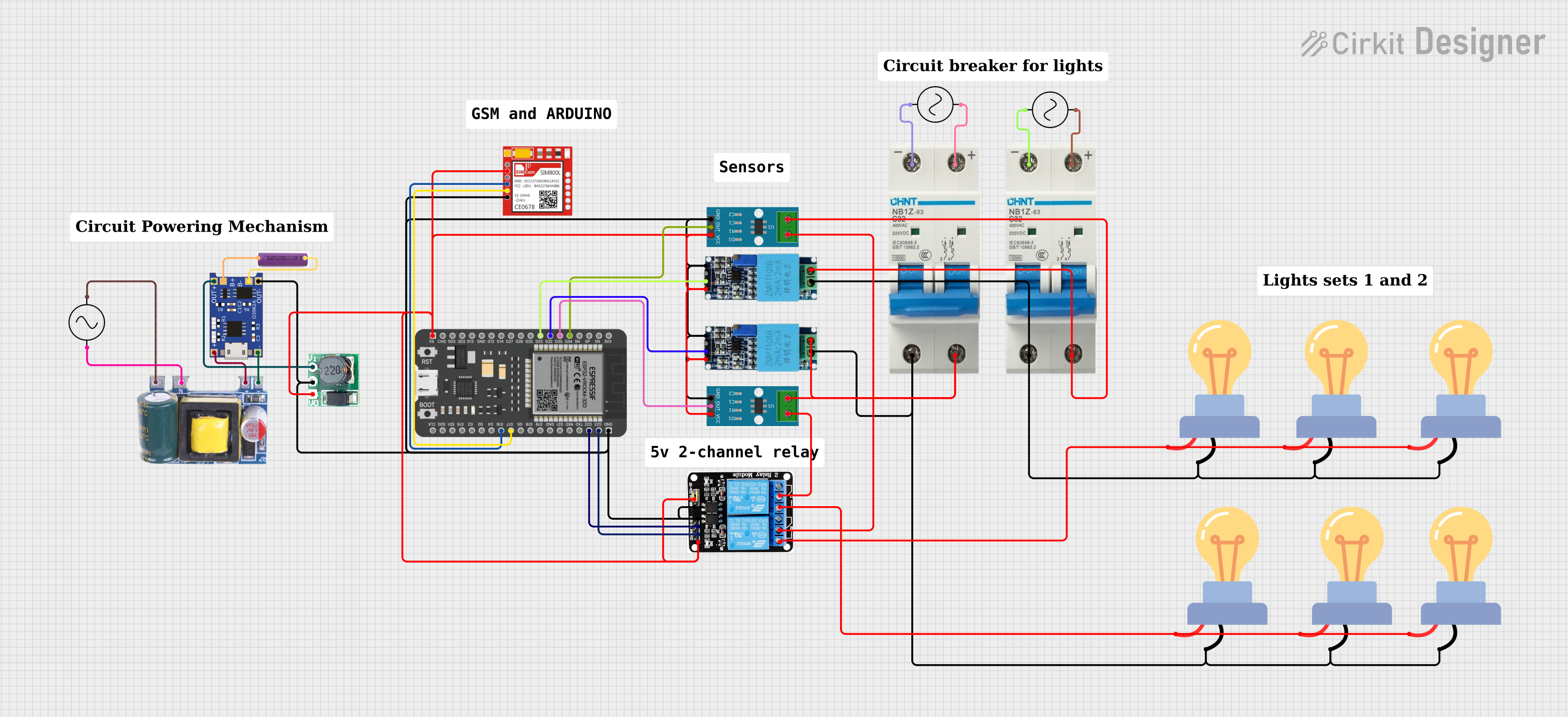
 Open Project in Cirkit Designer
Open Project in Cirkit DesignerExplore Projects Built with ACS712 30A

 Open Project in Cirkit Designer
Open Project in Cirkit Designer
 Open Project in Cirkit Designer
Open Project in Cirkit Designer
 Open Project in Cirkit Designer
Open Project in Cirkit Designer
 Open Project in Cirkit Designer
Open Project in Cirkit DesignerCommon Applications
- Power monitoring in appliances and industrial equipment
- Battery management systems
- Motor current sensing and control
- Overcurrent protection in circuits
- Energy metering and load monitoring
Technical Specifications
The following are the key technical details of the ACS712 30A current sensor:
| Parameter | Value |
|---|---|
| Supply Voltage (Vcc) | 4.5V to 5.5V |
| Current Measurement Range | ±30A |
| Sensitivity | 66mV/A |
| Output Voltage at 0A | Vcc/2 (typically 2.5V for 5V Vcc) |
| Response Time | 5 µs |
| Bandwidth | 80 kHz |
| Operating Temperature | -40°C to 85°C |
| Isolation Voltage | 2.1 kV RMS |
Pin Configuration and Descriptions
The ACS712 30A module typically has three pins for interfacing:
| Pin | Name | Description |
|---|---|---|
| 1 | Vcc | Power supply input (4.5V to 5.5V). Connect to the 5V pin of your microcontroller. |
| 2 | Out | Analog output voltage proportional to the current being measured. |
| 3 | GND | Ground connection. Connect to the ground of your circuit. |
Additionally, the module has two screw terminals for the current-carrying wire:
- IP+: Connect to the positive side of the current path.
- IP-: Connect to the negative side of the current path.
Usage Instructions
How to Use the ACS712 30A in a Circuit
- Power the Sensor: Connect the Vcc pin to a 5V power supply and the GND pin to the ground of your circuit.
- Connect the Current Path: Pass the wire carrying the current to be measured through the screw terminals (IP+ and IP-). Ensure the current flows in the correct direction as indicated on the module.
- Read the Output: Connect the Out pin to an analog input pin of a microcontroller (e.g., Arduino). The output voltage will vary linearly with the current being measured.
Important Considerations
- Calibration: The sensor's output voltage at 0A is typically 2.5V. You may need to calibrate your system to account for small offsets.
- Noise Filtering: Add a capacitor (e.g., 0.1 µF) between the Out pin and GND to reduce noise in the output signal.
- Current Direction: Positive current flows from IP+ to IP-, and negative current flows in the opposite direction.
- Isolation: The ACS712 provides electrical isolation between the current-carrying wire and the sensor's output, ensuring safety in high-current applications.
Example Code for Arduino UNO
The following code demonstrates how to use the ACS712 30A sensor with an Arduino UNO to measure current:
// Define the analog pin connected to the ACS712 output
const int sensorPin = A0;
// Define the sensitivity of the ACS712 30A sensor (66mV per amp)
const float sensitivity = 0.066; // 66mV/A
// Define the supply voltage (Vcc) in volts
const float Vcc = 5.0;
// Define the zero-current output voltage (Vcc/2)
const float zeroCurrentVoltage = Vcc / 2;
void setup() {
Serial.begin(9600); // Initialize serial communication
}
void loop() {
// Read the analog value from the sensor
int sensorValue = analogRead(sensorPin);
// Convert the analog value to a voltage
float sensorVoltage = (sensorValue / 1023.0) * Vcc;
// Calculate the current in amps
float current = (sensorVoltage - zeroCurrentVoltage) / sensitivity;
// Print the current to the Serial Monitor
Serial.print("Current: ");
Serial.print(current);
Serial.println(" A");
delay(1000); // Wait for 1 second before the next reading
}
Notes on the Code
- The
sensitivityvalue (66mV/A) is specific to the ACS712 30A version. Ensure you use the correct value for other versions. - The
zeroCurrentVoltageis assumed to be 2.5V for a 5V supply. If your sensor has a slight offset, adjust this value accordingly.
Troubleshooting and FAQs
Common Issues and Solutions
No Output or Incorrect Readings
- Ensure the sensor is powered with a stable 5V supply.
- Verify that the current-carrying wire is securely connected to the screw terminals.
- Check for loose or incorrect connections between the sensor and the microcontroller.
High Noise in Output
- Add a decoupling capacitor (e.g., 0.1 µF) between the Out pin and GND to filter noise.
- Use shielded cables for the current-carrying wire to reduce electromagnetic interference.
Output Voltage Does Not Return to 2.5V at 0A
- Calibrate the sensor by measuring the output voltage at 0A and adjusting the
zeroCurrentVoltagevalue in your code.
- Calibrate the sensor by measuring the output voltage at 0A and adjusting the
Output Voltage Saturates at High Currents
- Ensure the current being measured does not exceed the ±30A range of the sensor.
FAQs
Q: Can the ACS712 30A measure currents below 1A?
A: Yes, but the resolution may be limited due to the sensor's sensitivity (66mV/A). For higher precision at low currents, consider using a lower-range ACS712 variant (e.g., 5A or 20A).
Q: Can I use the ACS712 30A with a 3.3V microcontroller?
A: Yes, but the output voltage range will be limited, and you may need to adjust the zeroCurrentVoltage and sensitivity values in your calculations.
Q: Is the ACS712 suitable for high-frequency AC current measurements?
A: The ACS712 has a bandwidth of 80 kHz, making it suitable for most AC applications. However, for very high-frequency signals, additional filtering may be required.
Q: How do I protect the sensor from overcurrent?
A: Use a fuse or circuit breaker in series with the current path to protect the sensor from damage due to excessive current.